For Drew Steinbrecher, becoming an artist wasn’t one big “aha” moment—it was a series of small steps, experiments, and discoveries. Inspired by the beauty and chaos of urban life, Drew creates layered, textured work that feels both structured and spontaneous.

How did you find yourself on an artist’s path? Always there? Lightbulb moment? Dragged kicking and screaming? Evolving?
About 25 years ago I started knitting to manage anxiety. That led to modern quilting and eventually taking classes with Nancy Crow, a well-known fiber artist. That’s when I realized maybe I could be an artist.
Quilts take a long time, though, and I wanted to work faster. Collage had always interested me, so I leaned into that.
Around the same time, I discovered gel plates online. I liked the grungy textures they created, bought one, and started making my own collage papers. That’s when things really clicked, and I’ve called myself an artist ever since.
As an Amazon Associate I earn from qualifying purchases. Read more about our affiliate linking policy.
When did you first realize you are a creative person?
I was always a creative kid, always making things. But because I couldn’t draw, I assumed I wasn’t “an artist” and therefore not creative. In high school I took 2D and 3D design and loved it—that’s when I realized you don’t have to draw to be creative. Later I studied graphic design in college, which reinforced that idea.
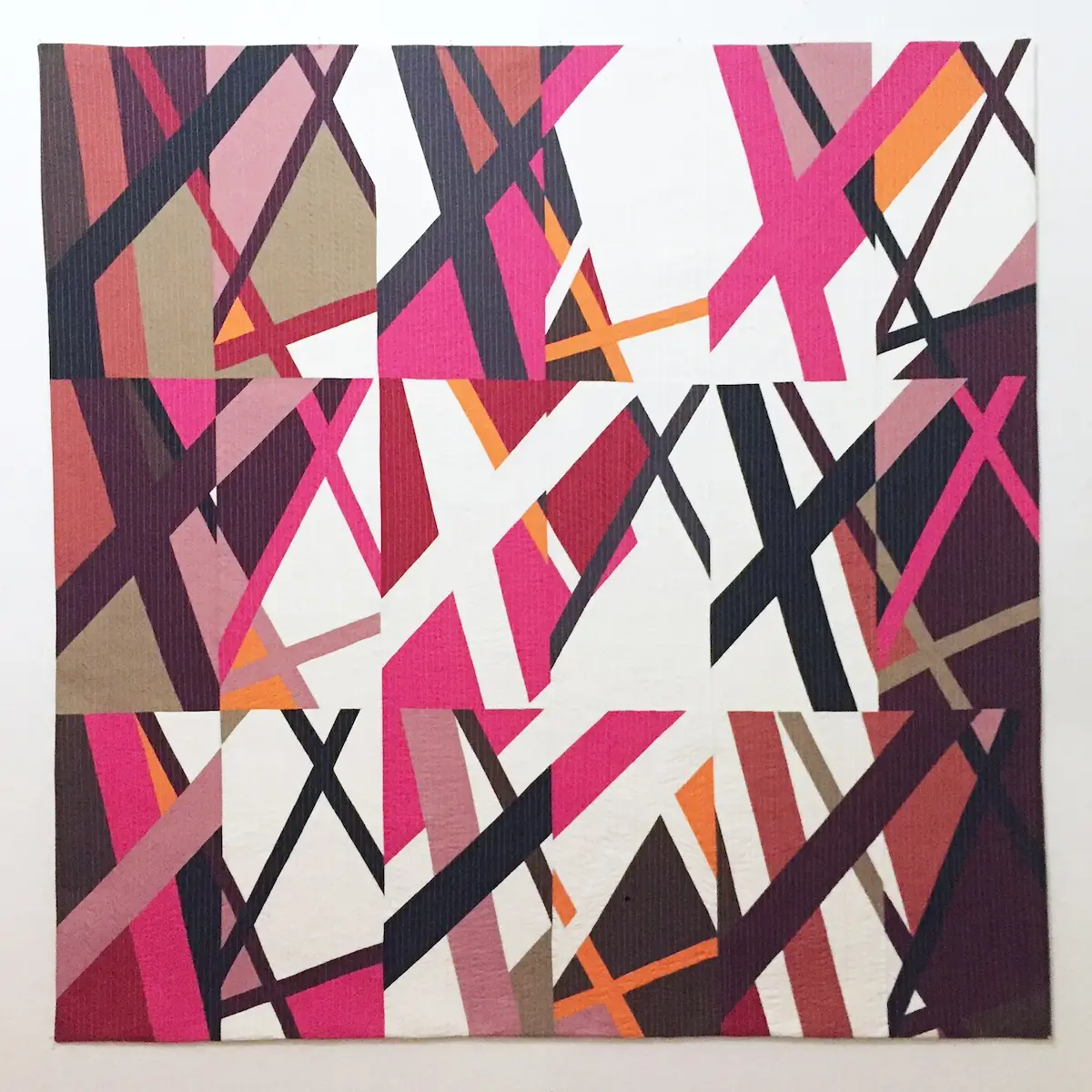
Was there a particular moment when you realized “This is what I want to do”?
Not really. I’m still figuring out what I want to do, and that’s part of the fun.

Where do you find inspiration? People? Places? Things?
Mostly in cities. I’m drawn to the controlled chaos of urban environments—graffiti, crumbling concrete, tangled power lines, torn posters, billboards. I like the mix of order and mess, and that comes through in my work.
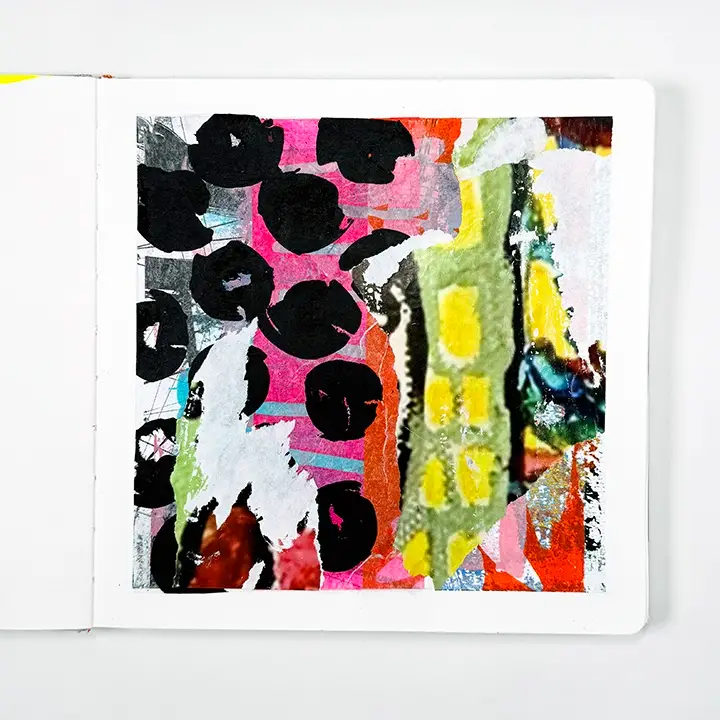

You work across multiple media. Do you have a favorite?
I don’t think I have a single favorite. But I always circle back to the computer or iPad—probably because of my years as a graphic designer working in Illustrator and Photoshop.
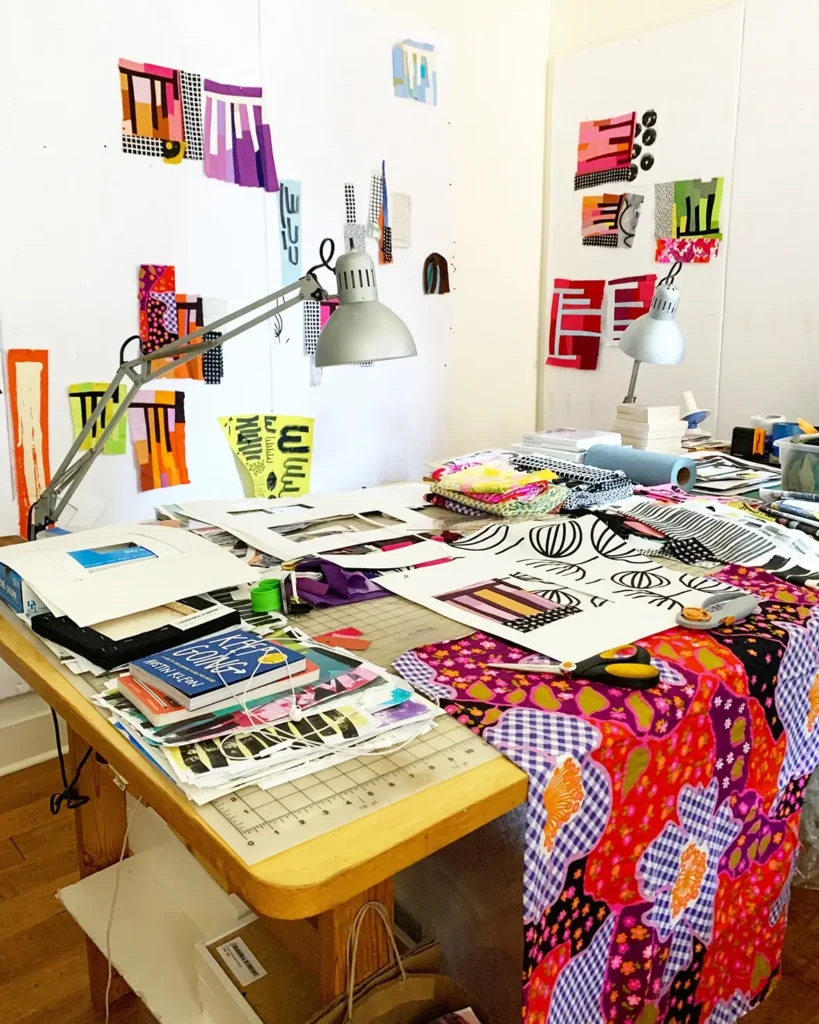
Describe your workspace. Is it set up in any special way to support your work?
I work out of our second bedroom. It’s small and doesn’t get great natural light, but I know I’m lucky to have the space. Of course, I wish for more room, better light, and a separate wet area with a sink so I could keep paint and messy media away from the dry work.
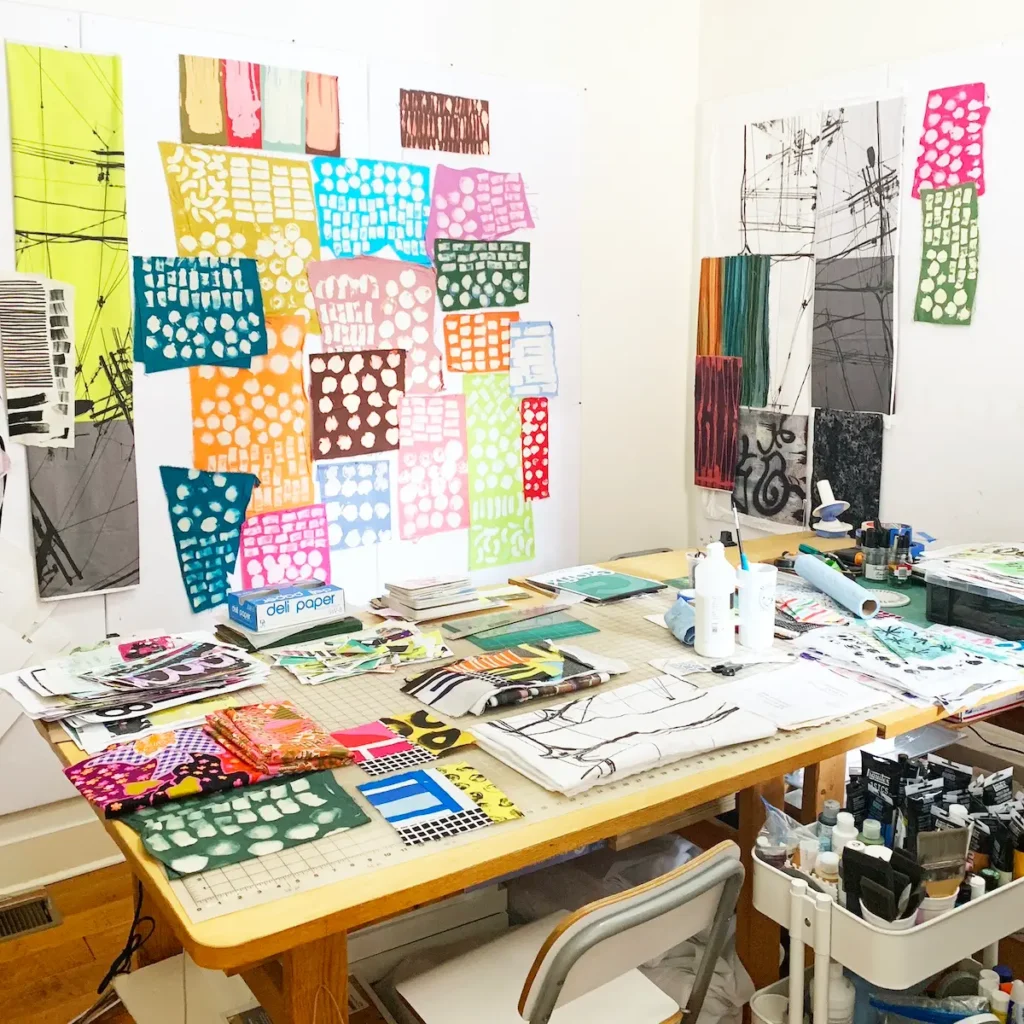
Scraps. Saver or toss ‘em?
Both. I’ll save scraps if they’re big enough, but when I finally do a big clean-up, I tend to get ruthless and throw everything out.
How do you balance spontaneity with structure in your creative flow?
I’m not very spontaneous—I like routine more than I’d like to admit. But within that routine, I give myself room to experiment.

What skills or techniques have been game-changers in your practice?
The gel plate changed everything. Once I started using it, my artistic voice came through in a way it hadn’t before.
Walk us through a typical day (or week). When you’re in the zone working on a project, what does that look like?
My days are split between running my online art courses and my own studio practice. When I’m focused on a project, I work in long stretches—often with an audiobook playing so I can trick myself into staying at the table longer.
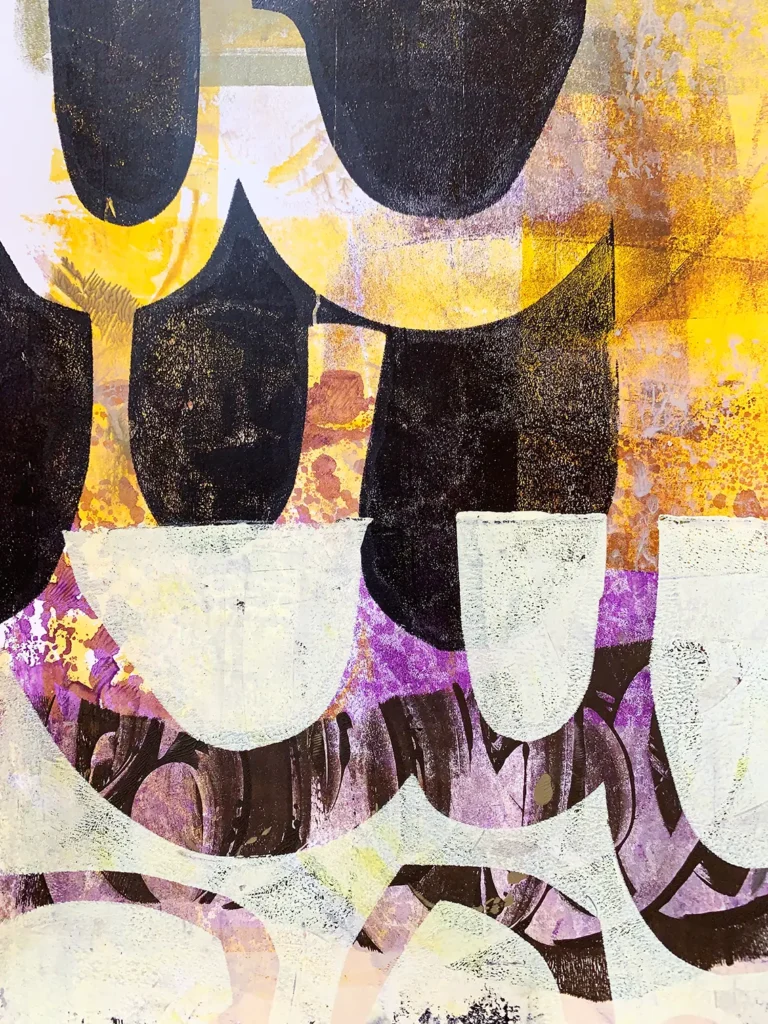
How do you go from “blank page” to final piece? Any steps or phases you always follow?
I usually just start making marks or pulling prints without overthinking. Once I have raw material, I edit and refine. It’s less about following steps and more about layering until the piece feels right.
When you are stuck, what helps you snap out of a creative block?
Mostly just starting. If I can trick myself into working—even for 10 minutes—I’ll often keep going. Listening to an audiobook helps. I’ve also learned that sometimes the best way through a block is to step away: take a real break, or travel, and come back with fresh eyes.

How do you know when it’s time to pivot or experiment with something new in your work?
When I’m not excited anymore, I know it’s time to shift.
What’s the best piece of creative advice you’ve received? And, oh – what’s the worst?
Best: “If you’re going to put something in the center, then put it in the center.” A design school professor said that—it’s about making your choices clear and intentional… If you’re going to do then do it.
Worst: Not really advice, but an artist I respect told me I’m bad with color. What they were really saying is that I wasn’t surrounding myself with the proper tools which was constraining my work.
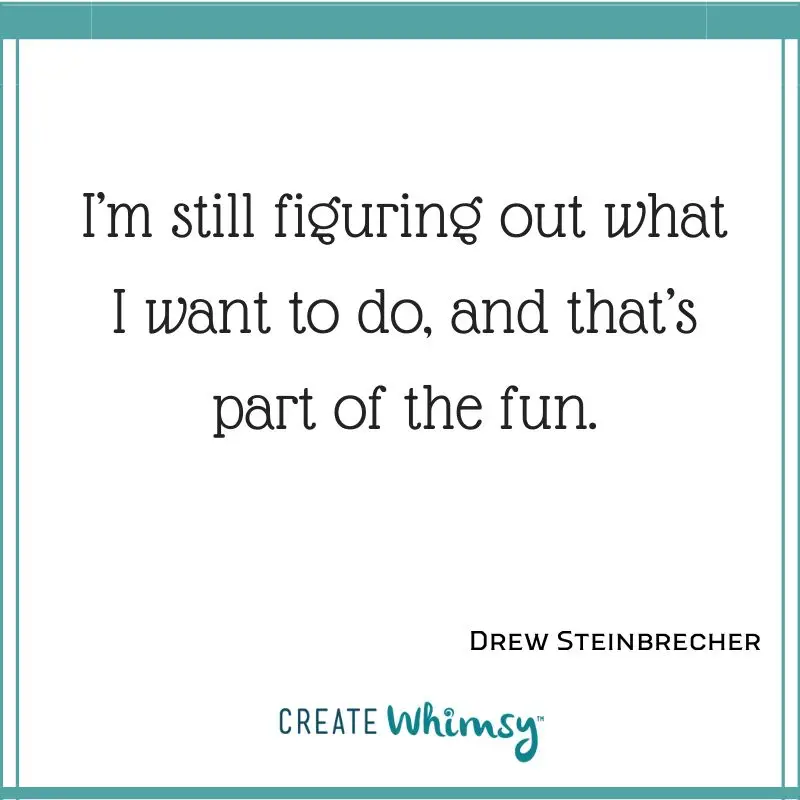
How do you juggle your creative goals with the other parts of your life?
Lately I’ve been saying I’m a full-time artist who doesn’t make art. My online course business has grown into a full-time job, and by the end of the day I sometimes just want to sit on the couch instead of going to the studio. It’s a balance I’m still working on.
Where can people see your work?
www.drewsteinbrecher.com
https://www.instagram.com/drewsteinbrecher
https://www.youtube.com/c/DrewSteinbrecherArt
Interview posted September 2025
Browse through more inspiring fiber art on Create Whimsy.
